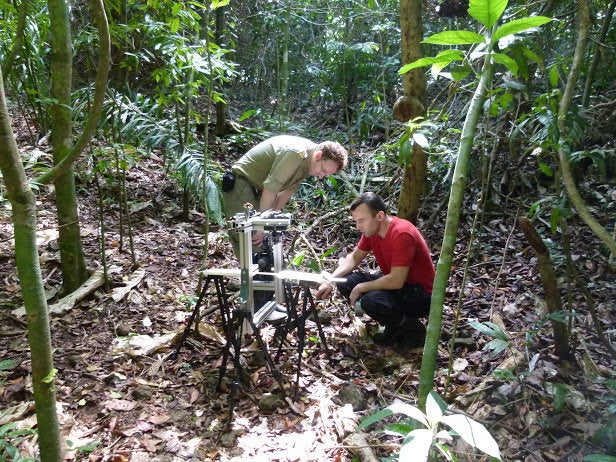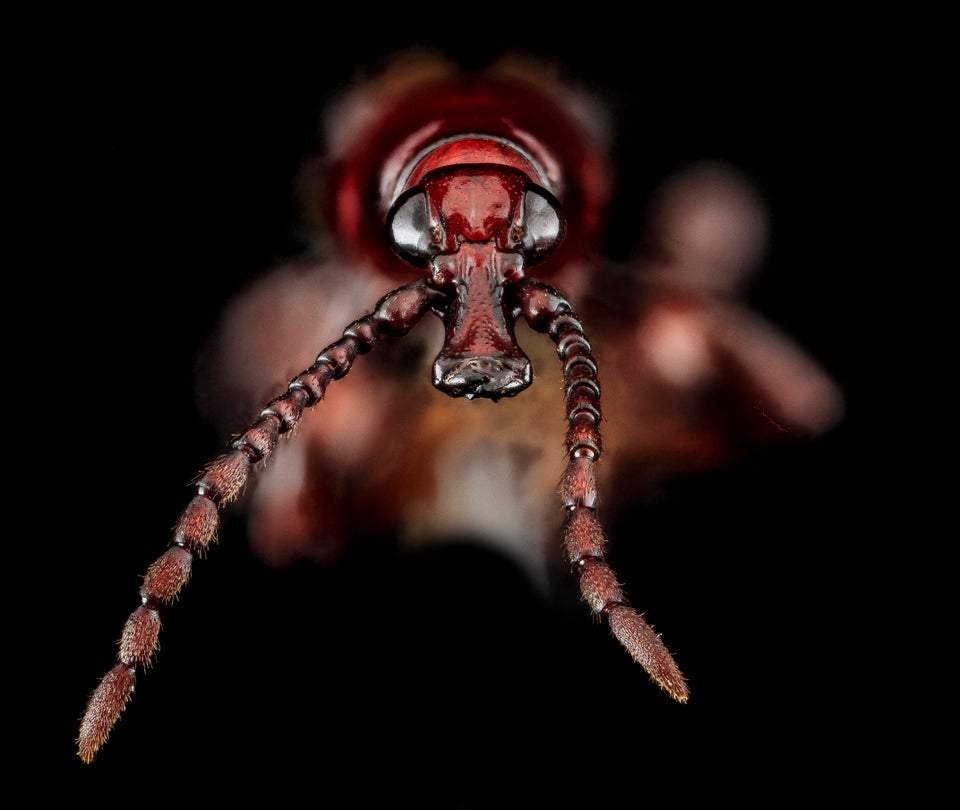Ants are pretty awesome. They clump up into islands to survive floods. They construct ginormous colonies. They even do acrobatics to build bridges (above) -- and now scientists have figured out exactly how.
Army ants construct complex bridges from their own bodies to span crevices as they move across tropical forest floors in Central America, and they adjust their bridges for efficiency based on a cost-benefit trade-off, according to a study published in the Proceedings of the National Academy of Sciences on Monday.
"For the first time, we show how army ants can build long suspended bridges between locations that cannot be spanned by one or two ants only," Simon Garnier, a researcher at New Jersey Institute of Technology and a co-author of the study, said in an email.

For the study, the researchers made a Y-shaped platform to mimic a gap in the trail of army ants in Barro Colorado Island, Panama and then filmed time-lapse videos of the ants traveling across the platform.
The researchers noticed that at first, the ants formed their bridge across the narrow side of the Y-shaped apparatus so as to use as few workers as possible. But then they realize that to create the shortest path for those crossing the bridge, they must move out to the wider side of the Y.
The ants benefit from shorter traveling distances, the researchers said, but they also incur a cost by sequestering workers that could be used for other important tasks, like catching food or transporting the young.
The researchers concluded that the ants do a sort of "cost-benefit analysis." When the bridge reaches a happy middle ground of making a short path while not occupying too many ants, the bridge-building stops, Garnier said.
When the bridge is no longer needed, the ants in the bridge disassemble.
This research goes far beyond the forest floor. It "could serve as a template to design self-assembling machines and self-repairing robotic swarms," Garnier said. "Slowly moving away from a starting point and progressively lengthening by addition of new workers, before stopping, suspended in mid-air -- was never described before."
After all, the surprise in the finding was the mechanism of construction.
"Mostly, this work demonstrates that complex, self-assembling and self-regulating collective structures can be achieved using very simple rules," Garnier said.
Also on HuffPost:

